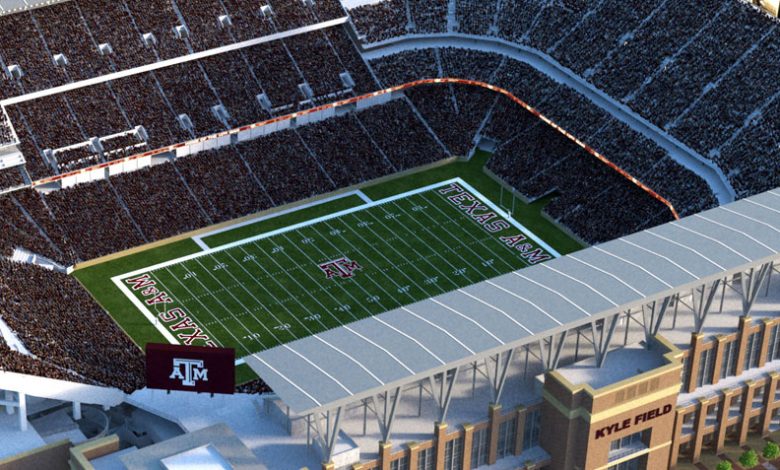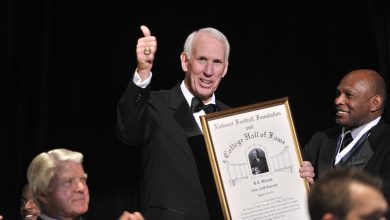Texas A&M to redevelop Kyle Field, making it largest stadium in SEC

In the realm of college football, few stadiums command the respect and admiration that Texas A&M University’s Kyle Field does. Known as the “Home of the 12th Man,” Kyle Field has long been a symbol of Aggie pride and tradition. However, recent developments have propelled this iconic venue into a new era, making it the largest stadium in the Southeastern Conference (SEC) and one of the most formidable home-field advantages in college football.
Kyle Field’s journey to becoming the SEC’s largest stadium is a testament to Texas A&M’s commitment to excellence and growth. Originally opened in 1927, the stadium has undergone several expansions to accommodate the increasing demand for seating. The most significant of these occurred between 2014 and 2015, when the university embarked on a comprehensive redevelopment project.
This ambitious renovation aimed to enhance the fan experience, improve facilities, and increase seating capacity. The project was completed on time and under budget, with a final cost of $483,888,885, which was $1,315,522 less than the guaranteed maximum price .
Before the redevelopment, Kyle Field had a seating capacity of 82,589. The expansion increased this to 102,733, making it the largest stadium in the SEC . This increase was achieved by lowering the field seven feet and adding six rows of seating around the entire stadium. Additionally, the four corners of the stadium were filled in, and new canopies were installed to amplify crowd noise, creating a more intimidating atmosphere for visiting teams .
The renovation wasn’t just about adding more seats; it was about enhancing the overall fan experience. The redevelopment included the addition of premium seating options such as founders’ suites, field boxes, and club areas. These upgrades provided fans with more comfortable and exclusive viewing experiences .
Inside the stadium, the improvements were equally impressive. The concourses were widened, additional restrooms were added, and enhanced concession areas were installed to accommodate the larger crowd. The latest gameday technology was also incorporated, ensuring that fans had access to the best amenities available .
The architectural firm Populous, known for its work on major sports venues, led the design of the renovation. The new façade and exterior plaza areas not only improved the aesthetics of the stadium but also enhanced accessibility and tailgating experiences for fans .
One of the most notable features of the renovation was the addition of the Bernard C. Richardson Zone at the north end of the stadium. This $32.9 million expansion added over 20,000 seats and brought fans 65 feet closer to the field. The ground level of The Zone houses the Texas A&M Sports Museum, the nation’s only all-sports museum funded primarily by former athletes .
The redevelopment of Kyle Field has had a significant economic impact on the College Station community. The project created thousands of construction jobs and has continued to generate revenue through increased attendance and year-round events. The enhanced facilities have also attracted top-tier talent, elevating the Aggies’ competitive edge in college football.
Culturally, the renovation reaffirmed Texas A&M’s dedication to preserving its rich traditions while embracing innovation. The university’s commitment to excellence is evident in every aspect of the project, from design to execution.
As the 2025 college football season approaches, Kyle Field stands as a beacon of what is possible when tradition meets innovation. The expansion has not only increased the stadium’s capacity but has also transformed it into a year-round destination for sports and entertainment events.
For the Texas A&M Aggies, Kyle Field is more than just a stadium; it’s a symbol of their enduring spirit and commitment to excellence. As the largest stadium in the SEC, it serves as a testament to the university’s vision and its unwavering support for the Aggie community.
The redevelopment of Kyle Field has solidified its status as the largest stadium in the SEC and one of the most impressive venues in college football. With its increased capacity, enhanced fan amenities, and state-of-the-art facilities, Kyle Field is poised to host generations of Aggie fans and continue its legacy as the “Home of the 12th Man.”
For more information and updates on the renovation, visit the official Texas A&M Athletics website.









